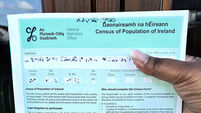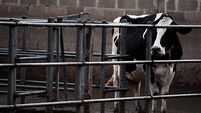Ireland's changing population: The areas with the highest birth and death rates

Tomas Doherty
The Central Statistics Office has published the latest birth and death rates in each of the Republic's local electoral areas (LEAs), providing a snapshot of how a region's population is evolving.
The agency's new report focuses on births and deaths in 2022 and does not take account of inward or outward migration. It found there were 54,483 births in the State that year, with the highest number in Dublin’s north inner city LEA at 701.
The Republic's overall birth rate in 2022 stood at 10.2 births per 1,000 of population. Tallaght South, Co Dublin (13.7), Enniscorthy, Co Wexford (13.3), and Ongar, Co Dublin (13.2) were the LEAs with the highest birth rates.
Glenties, Co Donegal (7.4), Killiney-Shankill in Dublin (7.6), and Galway City Central (7.6) recorded the lowest birth rates.
While the crude death rate nationally was 6.7 deaths per 1,000 of population, Belmullet in Co Mayo (11.5), Enniscorthy, Co Wexford (11.1), and Swinford, Co Mayo (10.7) were the LEAs with the highest rate.
In contrast, urban LEAs such as Blanchardstown-Mulhuddart (2.8), Lucan (3.0), Swords (3.4) and Maynooth (3.4) recorded some of the lowest crude death rates.
Looking at births and deaths together allows the calculation of the natural increase, which is the number of births minus the number of deaths.
The State's national rate of increase per 1,000 of population stood at 3.5 in 2022. LEAs in Dublin such as Blanchardstown-Mulhuddart (9.7), Ongar (9.7) and Tallaght South (9.6) were regions with some of the highest rates of natural increase.
In LEAs such as Ennistimon, Co Clare (0.2), and Lismore, Co Waterford (0.0), the rate of natural increase was close to neutral.
Fifteen LEAs recorded a negative natural increase rate in 2022, indicating more deaths than births occurred in the LEA, including Belmullet, Co Mayo (-2.9), Glenties, Co Donegal (-2.3) and Kenmare, Co Kerry (-1.2).
The report found that the national fertility rate stood at 42.3 births per 1,000 women aged 15-49 in 2022.
The fertility rate is defined as the number of births by women aged 15-49, relative to the population of women aged 15-49. This differs from the birth rate, which looks at the entire population in an area, while the fertility rate only focuses on women.
Enniscorthy, Co Wexford (57.0), Newcastle West, Co Limerick (53.5), Loughrea, Co Galway, Tramore-Waterford City West and Moate, Co Westmeath (all 52.9) were the LEAs with the highest general fertility rate in 2022.
Urban LEAs such as Galway City Central (27.8), Dublin's South-East Inner City (29.7) and North Inner City, (31.6) had the lowest general fertility rate per 1,000 women.
The report is part of the CSO's frontier series of publications, which use statistics and methods that are more experimental and under development. The population used to calculate rates and present average age at LEA level for 2022 was taken from the Irish Population Estimates from Administrative Data Sources (IPEADS).












